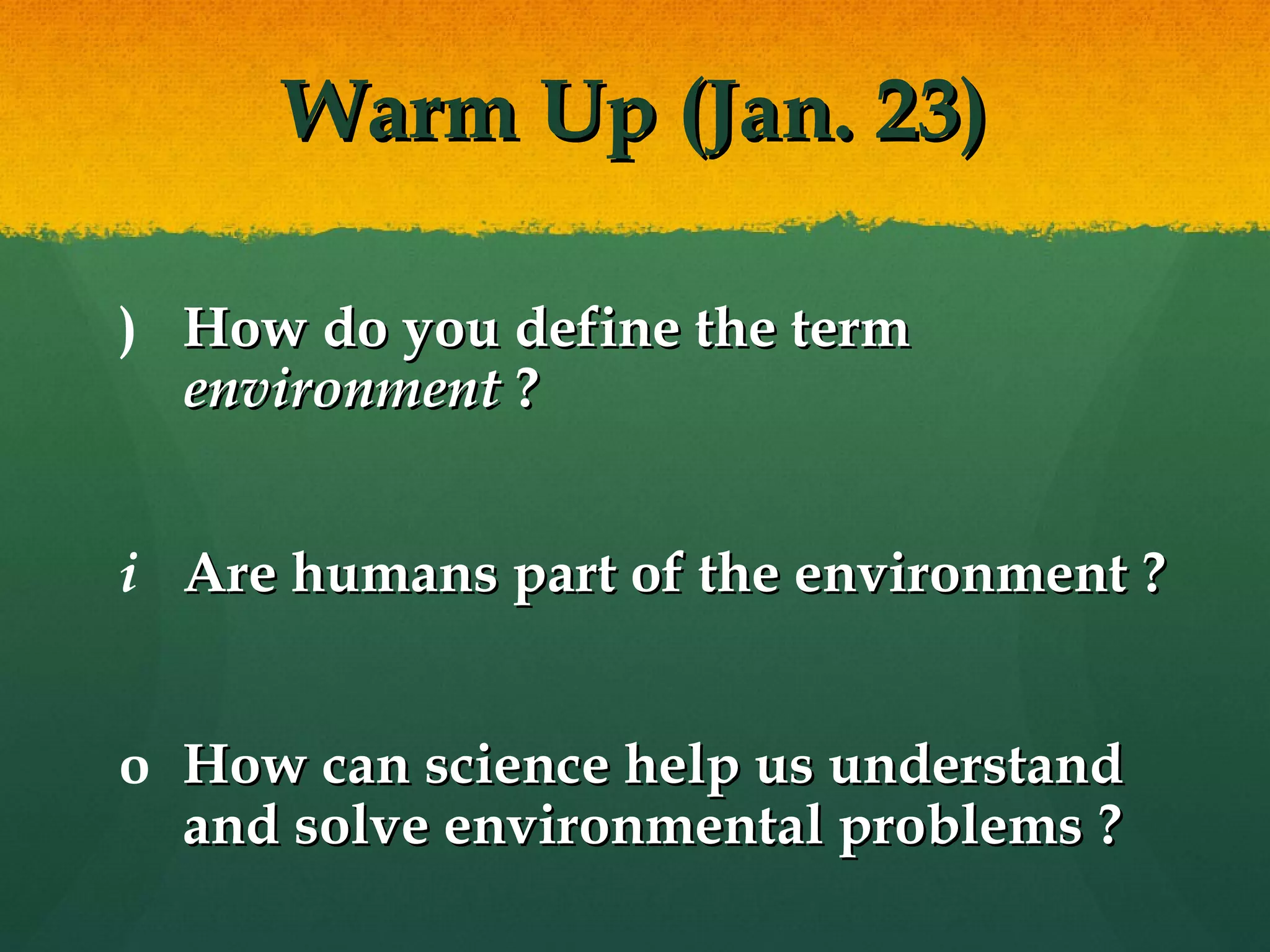The document defines key terms in environmental science and ecology, outlines the major fields of study that contribute to environmental science, and describes how hunter-gatherers, the agricultural revolution, and the industrial revolution impacted the environment. It identifies the goals of environmental science as understanding and solving environmental problems by studying human use of natural resources and how human actions change the environment. The document also classifies the three major environmental problems as resource depletion, pollution, and loss of biodiversity.
















